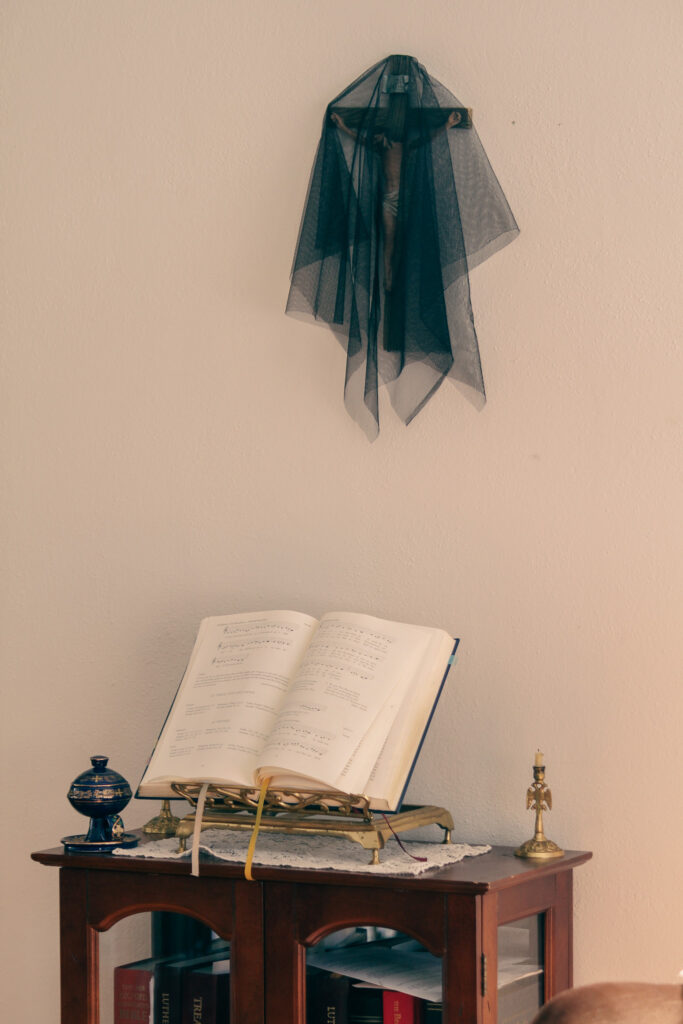
History
Since at least the Middle Ages, Western Christians have observed the practice of covering certain images in church buildings during Passiontide, a two-week period beginning on Judica Sunday. While some images like stained glass are not usually covered with veils—probably for practical reasons!—most statues, crosses, crucifixes, and the like are generally veiled between Judica and the Easter Vigil.
Although it might seem counterintuitive to veil things like crucifixes during the season especially focused on our Lord’s crucifixion, the roots of this custom can be understood from the Gospels, where Jesus describes the cross as a place where he is glorified. Since the cross, then, is a symbol of his glory, many have seen the veiling of crosses during Passiontide as a form of “fasting” from this glorious emblem until Good Friday, when the cross is unveiled and Christians can see more plainly this instrument upon which our Lord was lifted up.


This veiling also reflects the text of the Gospel lesson for Judica, which ends with St. John’s report that “Jesus hid himself and went out of the temple.” Indeed, while other images throughout the church building are often covered before the Divine Service on Judica, the central cross in the sanctuary is traditionally covered at the end of the Gospel lesson to show the correspondence between the lesson and the custom.
Over time, this custom of veiling images in churches has sometimes also transferred to individual homes, where Christians have covered their own images for Passiontide in imitation of the wider Church’s practice. Various cloths have been used, from black or violet fabrics in imitation of the usual liturgical colors for Passiontide to simpler sackcloth or burlap-like materials as a sign of penitence. Whatever material you choose to utilize, we hope that this custom will help prepare your eyes to focus more clearly on the one whose glory we see in his glorious cross and resurrection: our Lord Jesus Christ!


I do remember in my Catholic rearing days we did cover the crucifix during holy week until the Easter vigil.
What a simple act of covering the crucifix in commemoration of our our Lord’s upcoming ultimate sacrifice. Thank you for explaining this to this former Baptist girl!!
A lovely tradition I remember fondly doing in the parish and the home. We covered icons and statuary as well.